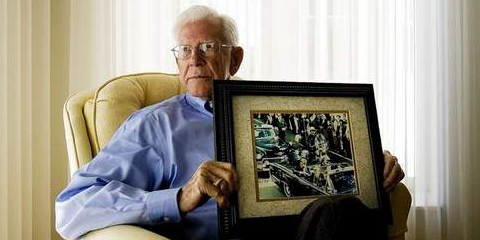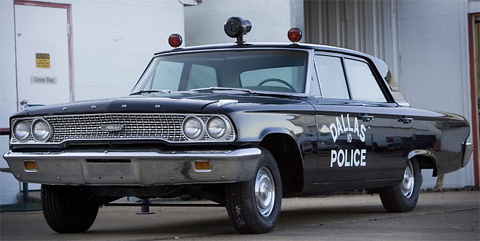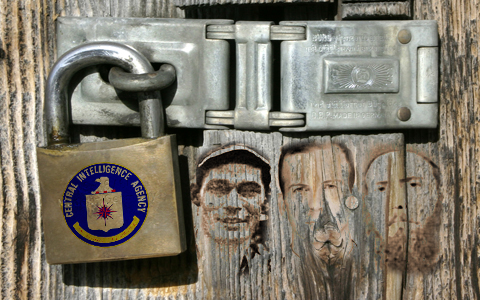by TERRY WALLACE / Associated Press Writer © 2009 The Associated Press
DALLAS — Dr. Malcolm Oliver Perry II, who attended to President John F. Kennedy at Parkland Memorial Hospital after he was shot in Dallas on Nov. 22, 1963, has died. He was 80.
The University of Texas Southwestern Medical Center, the teaching hospital for Parkland, said Monday that Perry died Saturday in Tyler after a battle with lung cancer.
Perry was an assistant professor of surgery at UT Southwestern and a vascular surgeon on the Parkland staff when he became the first staff surgeon to treat Kennedy.
In an extensive interview by the Warren Commission, which investigated the assassination, Perry recalled taking the case over from the senior resident, checking the president's vital signs and finding none but noting a convulsive effort to breath. He performed a tracheotomy on the president while other staff doctors and surgeons gathered to help.
Perry and another surgeon performed cardiopulmonary resuscitation on Kennedy until no brain activity was detected on the trauma room instruments. At 1 p.m., Kennedy was declared dead by Dr. Kemp Clark, the UT Southwestern neurosurgery chairman, from a catastrophic head wound.
Dr. Robert McClelland was the last surgeon to attend Kennedy in Trauma Room 1. McClelland, a longtime friend and Parkland and UT Southwestern colleague of Perry's, remembers that the shock of realizing whom they were treating faded quickly when they entered the trauma room.
"At Parkland we're accustomed, all of us are, to treating many different cases," McClelland told The Associated Press on Monday. "Of course, it's the president," he said. Was it hard to put that aside? "No, not really. Everything was so rapidly happening that we were called on the peak of the moment."
Perry told the commission that the neck wound Kennedy suffered from the sniper's first rifle shot would likely have not been fatal. However, he testified that neither he nor Clark could tell from their examinations from where the bullets came.
The vascular surgeon also was one of the doctors to operate on presidential assassin Lee Harvey Oswald, who was shot two days after Kennedy's death by Jack Ruby.
After a long career, Perry retired in 2000 as professor emeritus of surgery at UT Southwestern. But McClelland, now 80, said that after the assassination his friend never mentioned their role in the case, and that they never discussed it even among themselves.
"No, we didn't, for reasons he kept to himself. Immediately after, he had a bad experience with interviews that hurt him deeply. Whenever the subject threatened to come up, he'd raise an eyebrow and that would be that," he said.
Perry was born in Allen, Texas, a once-tiny farming-and-railroad town about 20 miles north of Dallas that is now one of the city's fastest-growing suburbs. He was raised by his grandfather and namesake, Dr. Malcolm O. Perry I, a general practitioner in the small town.
------------
Associated Press writer Jamie Stengle contributed to this report.
Source: Houston Chronicle
DALLAS — Dr. Malcolm Oliver Perry II, who attended to President John F. Kennedy at Parkland Memorial Hospital after he was shot in Dallas on Nov. 22, 1963, has died. He was 80.
The University of Texas Southwestern Medical Center, the teaching hospital for Parkland, said Monday that Perry died Saturday in Tyler after a battle with lung cancer.
Perry was an assistant professor of surgery at UT Southwestern and a vascular surgeon on the Parkland staff when he became the first staff surgeon to treat Kennedy.
In an extensive interview by the Warren Commission, which investigated the assassination, Perry recalled taking the case over from the senior resident, checking the president's vital signs and finding none but noting a convulsive effort to breath. He performed a tracheotomy on the president while other staff doctors and surgeons gathered to help.
Perry and another surgeon performed cardiopulmonary resuscitation on Kennedy until no brain activity was detected on the trauma room instruments. At 1 p.m., Kennedy was declared dead by Dr. Kemp Clark, the UT Southwestern neurosurgery chairman, from a catastrophic head wound.
Dr. Robert McClelland was the last surgeon to attend Kennedy in Trauma Room 1. McClelland, a longtime friend and Parkland and UT Southwestern colleague of Perry's, remembers that the shock of realizing whom they were treating faded quickly when they entered the trauma room.
"At Parkland we're accustomed, all of us are, to treating many different cases," McClelland told The Associated Press on Monday. "Of course, it's the president," he said. Was it hard to put that aside? "No, not really. Everything was so rapidly happening that we were called on the peak of the moment."
Perry told the commission that the neck wound Kennedy suffered from the sniper's first rifle shot would likely have not been fatal. However, he testified that neither he nor Clark could tell from their examinations from where the bullets came.
The vascular surgeon also was one of the doctors to operate on presidential assassin Lee Harvey Oswald, who was shot two days after Kennedy's death by Jack Ruby.
After a long career, Perry retired in 2000 as professor emeritus of surgery at UT Southwestern. But McClelland, now 80, said that after the assassination his friend never mentioned their role in the case, and that they never discussed it even among themselves.
"No, we didn't, for reasons he kept to himself. Immediately after, he had a bad experience with interviews that hurt him deeply. Whenever the subject threatened to come up, he'd raise an eyebrow and that would be that," he said.
Perry was born in Allen, Texas, a once-tiny farming-and-railroad town about 20 miles north of Dallas that is now one of the city's fastest-growing suburbs. He was raised by his grandfather and namesake, Dr. Malcolm O. Perry I, a general practitioner in the small town.
------------
Associated Press writer Jamie Stengle contributed to this report.
Source: Houston Chronicle







